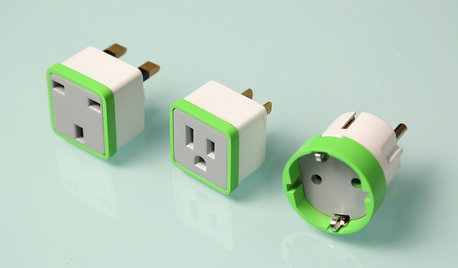Reducing electric bill by increasing power factor?
garyg
16 years ago
Related Stories

KITCHEN DESIGNA Stylist’s Secrets for Giving Your Kitchen the Wow Factor
There’s more to getting a fabulous kitchen than designing and installing it. It's the little details that elevate its look
Full Story
GREEN BUILDINGHouzz Tour: See a Maine House With a $240 Annual Energy Bill
Airtight and powered by the sun, this energy-efficient home in a cold-winter climate is an architectural feat
Full Story
LIFETake Ownership of Your Rental's Green Factor
Just because you rent doesn't mean ecofriendly living is beyond reach. These 16 tips can help
Full Story
HOME TECHPlug Into Home Power Monitors That Pay for Themselves
Stop throwing away money on wasted electricity with help from new monitors that work with your phone or computer
Full Story
MOST POPULAREasy Green: 23 Ways to Reduce Waste at Home
Pick from this plethora of earth-friendly ideas to send less to the landfill and keep more money in your pocket
Full Story
GREEN BUILDINGOff the Grid: Ready to Pull the Plug on City Power?
What to consider if you want to stop relying on public utilities — or just have a more energy-efficient home
Full Story
GREAT HOME PROJECTSPower to the People: Outlets Right Where You Want Them
No more crawling and craning. With outlets in furniture, drawers and cabinets, access to power has never been easier
Full Story
DISASTER PREP & RECOVERYMore Power to You: How to Pick the Right Generator
If your home's electricity goes, don't let it take your necessities with it — keep systems running with this guide to backup power
Full Story
GREEN BUILDINGHouzz Tour: See a Concrete House With a $0 Energy Bill
Passive House principles and universal design elements result in a home that’ll work efficiently for the long haul
Full Story
GREEN BUILDINGHouzz Tour: Passive House in Vermont Slashes Heating Bills
Its ecofriendly, low-maintenance design leaves a family with more time to relax and enjoy the weekend home
Full StoryMore Discussions






fsq4cw
garygOriginal Author
Related Professionals
Attleboro Solar Energy Systems · Eastvale Solar Energy Systems · Gardena Solar Energy Systems · Reedley Solar Energy Systems · Broomfield Home Automation & Home Media · Coral Terrace Home Automation & Home Media · Fort Collins Home Automation & Home Media · Jamaica Plain Home Automation & Home Media · Melrose Home Automation & Home Media · Odenton Home Automation & Home Media · Springfield Home Automation & Home Media · West Palm Beach Home Automation & Home Media · Winchester Home Automation & Home Media · Framingham Center Electricians · Downers Grove Fireplacesdavidandkasie
zl700
garygOriginal Author
ky114
joeplumb
watts4less
thull
hendricus
watts4less
bryan.spurlock
engineeredgarden
garygOriginal Author
vacman_20008
zl700
bus_driver
vacman_20008
vacman_20008
garymunson-2008
brickeyee
garygOriginal Author
vacman_20008
miken_2008
nsboyd1210
davidro1
speedymonk
ordory
brickeyee
speedymonk
speedymonk
garymunson-2008
bus_driver
davidro1
speedymonk
garymunson-2008
garymunson-2008
andrelaplume2
brickeyee
davidro1